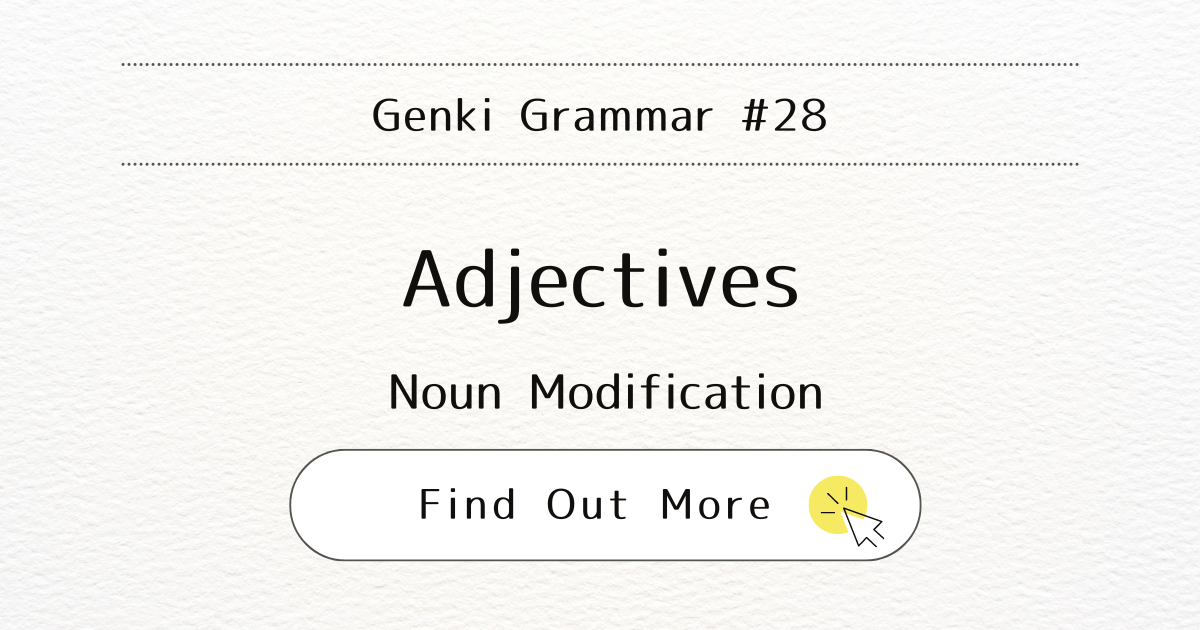
Introduction
In this post, we will learn how to use adjectives to modify nouns in Japanese. This is a useful skill that helps you describe people, places, and things more accurately. This is called the attributive use of adjectives.
What It Means
In Japanese, adjectives can modify nouns just like in English. There are two types of adjectives: い-adjectives and な-adjectives.
When You Use It
Use い-adjectives and な-adjectives to give more detail about a noun. This can make your sentences more descriptive and interesting.
Examples
い-Adjectives:
- おもしろい映画 (omoshiroi eiga): an interesting movie
- こわい先生 (kowai sensei): a scary teacher
Example Sentences:
- きのう、おもしろい映画を見ました。(Kinou, omoshiroi eiga o mimashita.): I saw an interesting movie yesterday.
- 佐藤先生はこわい先生です。(Satou sensei wa kowai sensei desu.): Professor Satou is a scary teacher.
な-Adjectives:
- きれいな花 (kirei na hana): a beautiful flower
- にぎやかな町 (nigiyaka na machi): a vibrant city
Example Sentences:
- 京都できれいな絵を買いました。(Kyoto de kirei na e o kaimashita.): I bought a beautiful picture in Kyoto.
- 東京はとてもにぎやかな町です。(Toukyou wa totemo nigiyaka na machi desu.): Tokyo is a very vibrant city.
Note
Remember, the い-adjective stays in its dictionary form when modifying a noun. For な-adjectives, you need to add な before the noun.
Conclusion
Using adjectives to modify nouns makes your Japanese more descriptive and engaging. Practice with these examples to get comfortable using い-adjectives and な-adjectives in your sentences.



